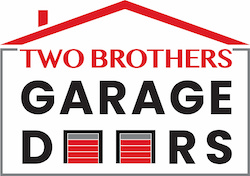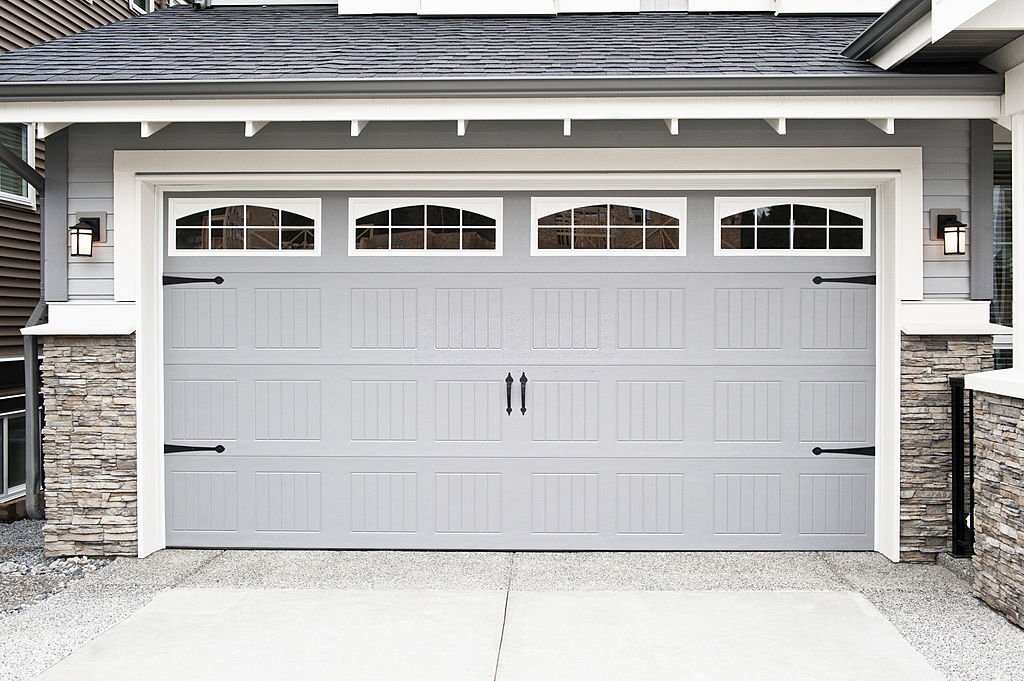
Garage Door Maintenance Checklist
Every year in the United States, there are 20,000 injuries related to garage doors. A well-maintained garage door will protect your property and help prevent these accidents. Ignoring regular garage door maintenance can lead to injuries or getting stuck in the garage because the door fails to open. Our goal with this post is to give you a clear checklist of tasks you can handle yourself. We’ll cover everything from checking sensors and lubricating parts to tightening hardware. By following these steps, you will keep your garage door working properly, hopefully for as long as you own your home.
Key Takeaways
- Regularly inspect and maintain your garage door so it’s safe to use
- Clean and lubricate parts to prevent wear and tear
- Regular maintenance can extend the lifespan of a garage door by 5-10 years
Safety First!
When we perform garage door maintenance, safety should be our top priority. Taking a few additional steps can help prevent injuries.
Wear Protective Gear (Gloves, Safety Glasses)
Gloves protect hands from sharp edges, being pinched, and harmful chemicals, while safety glasses protect your eyes from debris.
Disconnect the Garage Door Opener
Before starting, disconnect your garage door opener and pull the release cord. Try to open the door manually, and make sure the door is down to prevent accidents.
Use a Sturdy Ladder
A good ladder should be rated for the weight we will be using, including our weight and any tools we carry. Place the ladder on a flat surface to avoid falls, and try not to lean too far forward. Have someone nearby just in case something goes wrong.
Cleaning and Lubrication
Cleaning Parts
Keeping important garage door parts clean helps prevent dirt and debris from building up that can cause wear and tear.
- Tracks: Regularly check the tracks for debris, dirt, and rust. Wipe each part separately with a soft, damp cloth.
- Rollers: Inspect the rollers for dust and grime. Use a soft brush to help remove loose dust and dirt.
- Hinges and Springs: Wipe down the hinges and springs with a soft cloth, avoiding sharp parts or edges.
Lubricate Moving Parts
Start by identifying parts of the garage door that need lubrication, such as hinges, rollers, and springs.
- Hinges help the garage door open and close. They need lubrication if they make a squeaking noise or are hard to move.
- Rollers move the door up and down a track. They need to be lubricated if they make weird noises or stop moving.
- Springs counterbalance the door’s weight. Lubricating springs help them work quietly by reducing friction and preventing squeaking noises.
Be sure to use a silicone-based lubricant for garage doors, not WD 40. Avoid using grease, as it can attract dirt.
Testing The Door
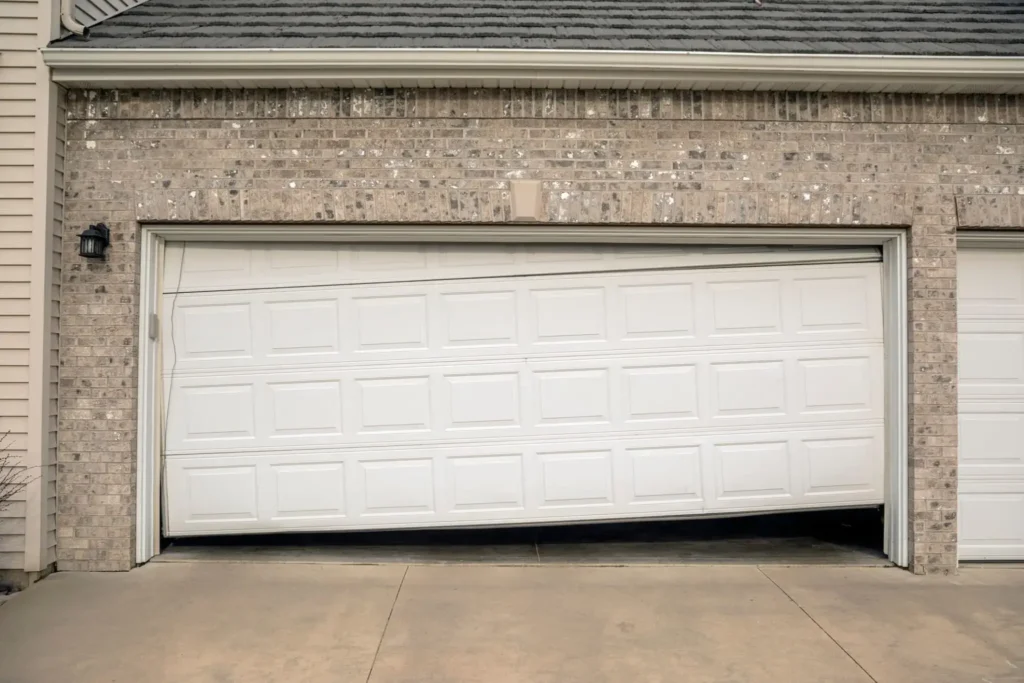
Conduct manual and automatic operation tests, check safety sensors, and evaluate limit switches.
Manual Test
To test a garage door manually, disconnect the opener and gently lift it. When lifted halfway, the door should move smoothly and stay in place. If it falls or is challenging to lift, check for issues with the springs or rollers.
Automatic Test
The automatic operation test involves reconnecting the garage door opener and watching how it moves. The door should open smoothly without jerking or hesitating, and any weird noises or sluggishness could indicate worn-out rollers or a misaligned track.
Test Safety Sensor
Safety sensors are essential for preventing accidents. To test them, place an object in the door’s path and use the garage remote to close the door. If the sensors work, the door should reverse upon detecting the object. If the door continues to close, the sensors may be misaligned or broken, posing a potential safety risk. Regularly checking these sensors will help prevent any accidents.
Test Limit Switches
Lastly, we need to test the limit switches. These switches control how far the door opens and closes. You can find them on the garage door opener unit. Next, try opening and closing the garage door. If the door struggles to stop or close, the switch might need to be adjusted.
Inspection and Tightening
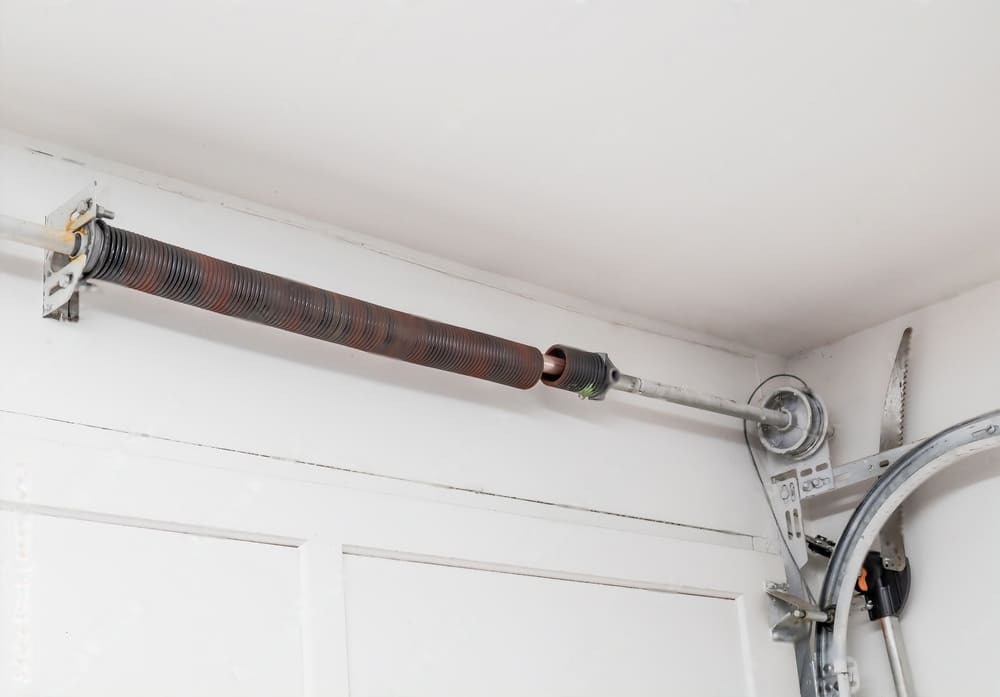
Regular inspection and tightening of garage door parts ensure that the door is working correctly and safe to use. This involves checking parts for signs of wear and tear and that all hardware is tightened correctly.
Check for Signs of Wear and Tear
We should carefully check the garage door panels for cracks, dents, or signs of wear. These problems can affect the door’s work and cause bigger issues later. Focus on the edges and corners, where damage often happens. If we find any problems, we may need to fix or replace the panels to prevent further issues.
Inspect Springs, Cables, and Rollers
A garage door’s springs, cables, and rollers must be working correctly to operate correctly. We must inspect them closely for wear, like frayed cables or rusted springs. We should also check that the rollers move smoothly along the tracks. If any parts show significant wear, we should replace them ASAP to keep the door working safely and correctly.
Examine Garage Door Tracks
The tracks must be clear and aligned for your garage door to operate correctly. Check for debris that might block your rollers from moving down the track, like dirt or leaves. Regularly cleaning your tracks will help prevent your garage door from getting stuck. Next, make sure the tracks are correctly aligned. If tracks are misaligned, they can cause the garage door to struggle to move up and down the track, damaging your door.
Hardware Tightening
The average garage door opens and closes about 1,500 times per year, leading to hardware becoming lose. Use a wrench to tighten any bolts, screws, and fasteners that have loosened. Checking your tightened hardware will help prevent accidents caused by loose parts and ensure your door works correctly.
Door Balance Test
A simple but essential test is checking that the door is balanced. The first step is disconnecting the garage door opener and lifting the door halfway with your hands. If the door stays in place, it’s balanced. If it drops or lifts, you need to adjust the springs.
Garage Door Opener Maintenance
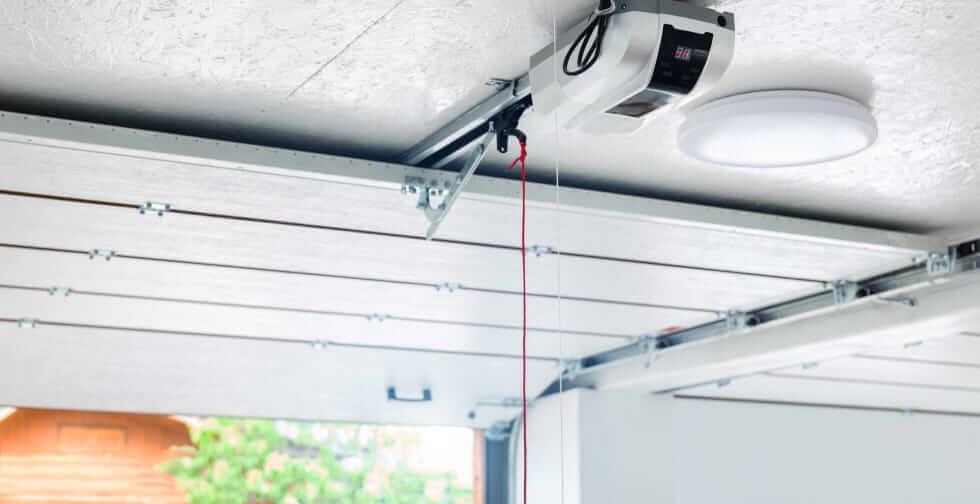
Sometimes, a garage door opener’s mechanism, remote control, or sensors break down. Maintaining these parts will help your door open and close correctly.
Opener Mechanism
Regularly check the opener mechanism for wear and tear, inspecting its gear and belt for damage. Simply lubricating these parts will help reduce friction and allow your door to move more quickly. Test the opener’s safety reverse feature by placing a small object under the door and closing it. Examine wiring for frays or loose connections and tighten any loose screws.
Remote Controls and Sensors
Start by changing the batteries in the remote controls at least once a year. If your door opens randomly, it might be a sign of weak batteries. Next, check the bottom garage sensors for dust or debris. Clean the sensors with a damp cloth and double-check that they are aligned with one another. Lastly, the emergency release cord should be regularly tested. This will allow you to open the door manually if the garage door opener stops working.
Regular Maintenance Tips
You must follow a regular maintenance routine to keep your garage door working properly. This means knowing how often to check the door, understanding the benefits of professional inspections, and fixing common issues quickly.
Recommended Maintenance Schedule
- Monthly:
- Look for any signs of wear or tear.
- Check tracks, springs, and rollers for debris.
- Test automatic door opener.
- Every Six Months:
- Lubricate hinges and rollers.
- Check sensors for debris and make sure they’re aligned properly.
- Tighten lose hardware.
- Manually open and shut garage doors.
- Annually:
- Do a full inspection of the garage door.
- Look for signs of rust or alignment issues.
- Change garage opener’s batteries.
How to Address Common Garage Door Problems
- If your garage door makes too much noise:
- Tighten any loose hardware.
- Lubricate all moving parts.
- If your garage door struggles to move up and down the track:
- Gently adjust the tracks so that they’re aligned.
- If your door fails to open or close:
- Follow this checklist
- Consider calling a professional garage repair company
When to Hire a Professional Garage Repair Company
While you may be able to handle some basic garage door maintenance, it is important to have a professional inspect your garage door. An expert garage door tech will spot problems and urgent issues, like broken springs or worn-out cables. We recommend having a tech come out and inspect at least once a year. This will help you save money by catching problems early on before they become bigger issues.
Conclusion
By maintaining our garage doors, we can avoid costly repairs down the road and ensure they last a lifetime. A simple maintenance checklist can help you stay on track with tasks like lubricating moving parts, checking for wear and tear, and testing the door manually. If you encounter any problems or need help, professional garage door services can provide a second opinion and take care of any repairs.
